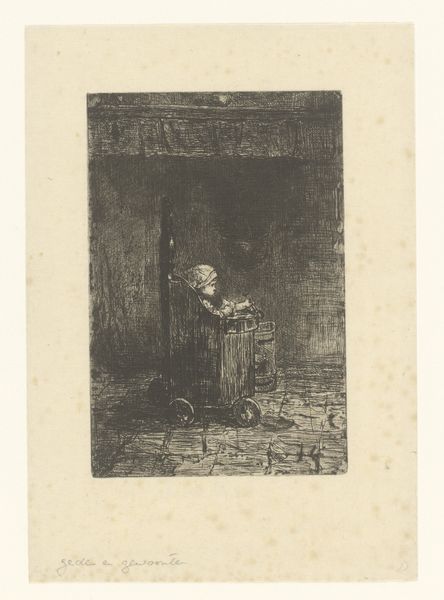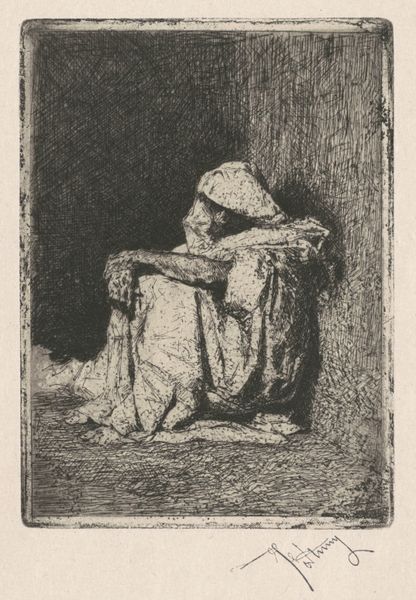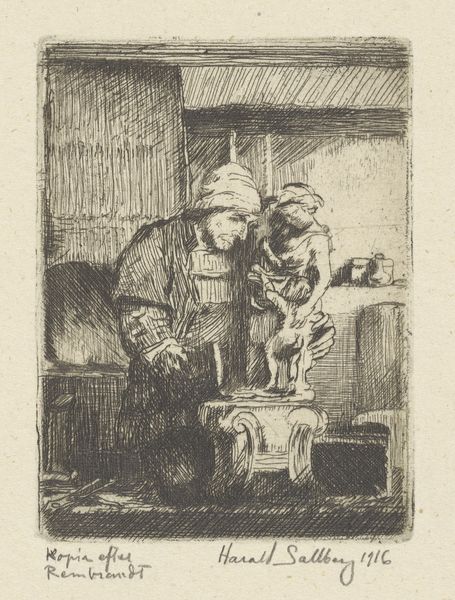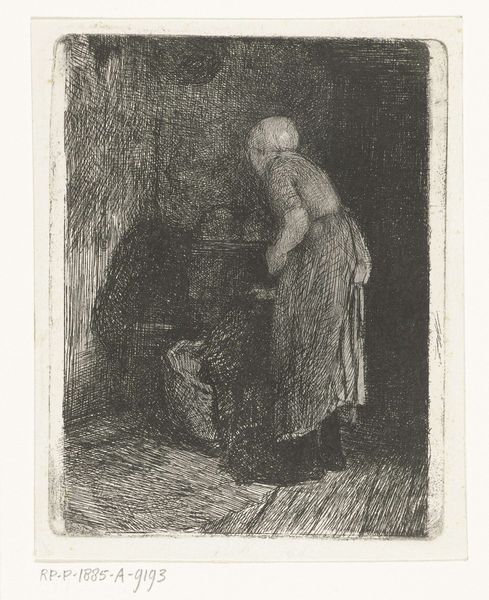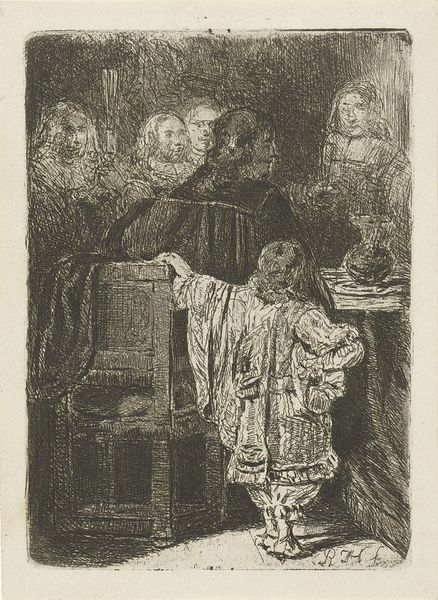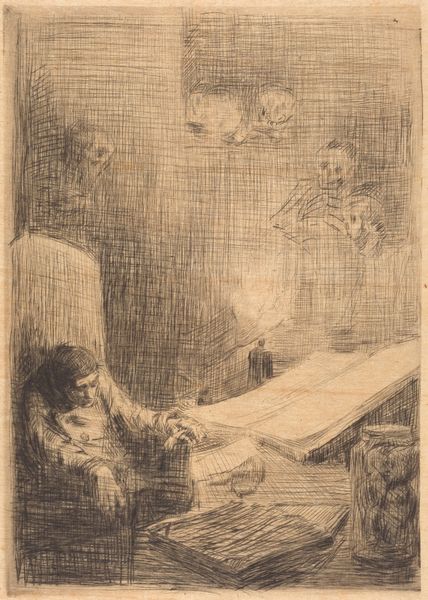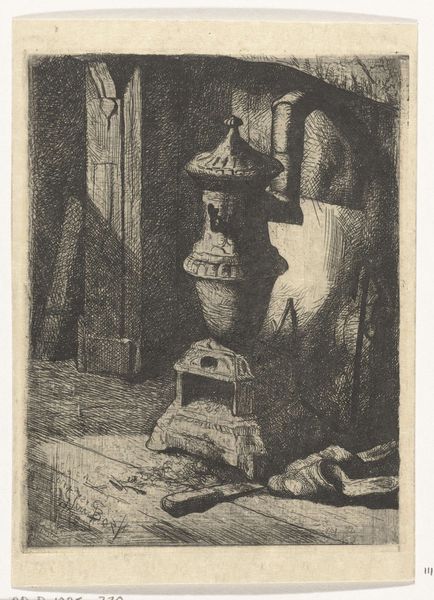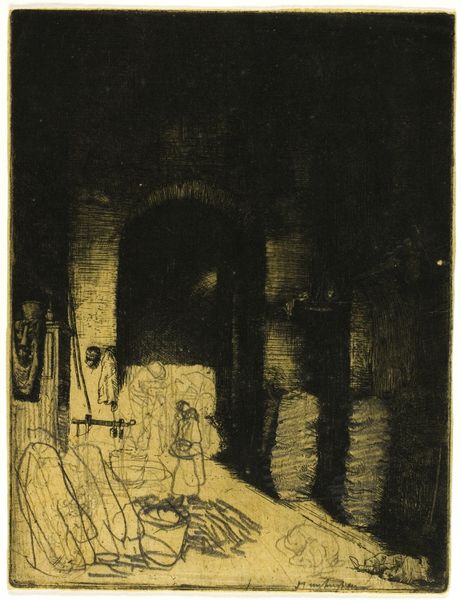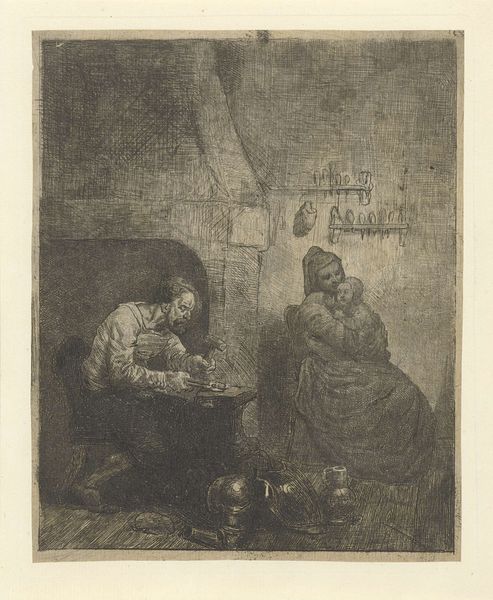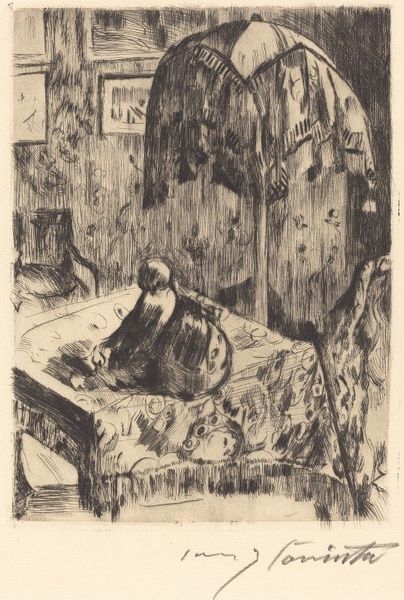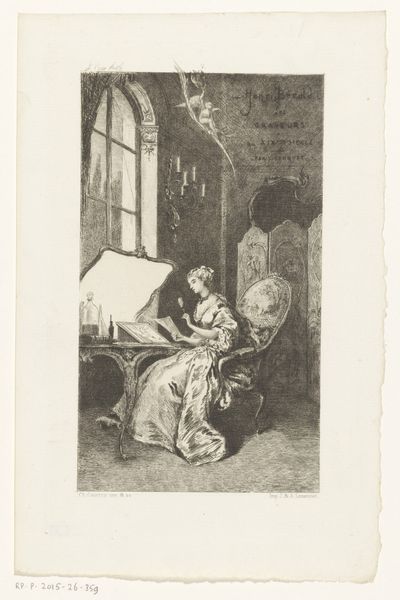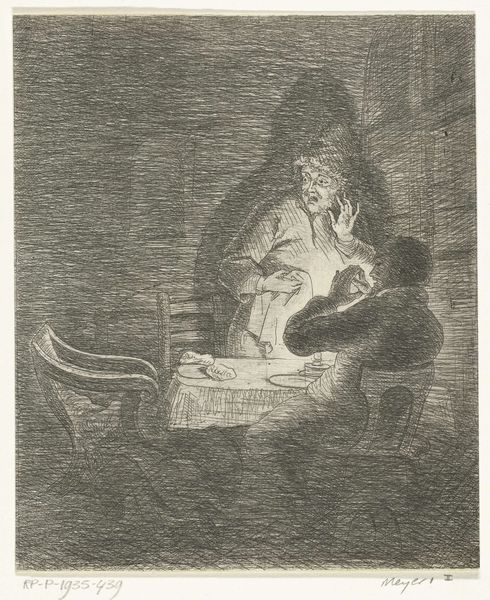
etching
#
portrait
#
dutch-golden-age
#
etching
#
genre-painting
#
realism
Dimensions: height 151 mm, width 101 mm
Copyright: Rijks Museum: Open Domain
Editor: So, this etching is called "Kind in de kinderstoel", or "Child in a highchair," by Jozef Israëls. It was made sometime between 1835 and 1911, and it's here at the Rijksmuseum. It feels so... dark. What do you see in this piece, focusing on its making and what it reveals? Curator: What interests me most is how Israëls uses the etching process itself to depict a specific social reality. Look at the density of the lines – almost claustrophobic. It evokes the labor-intensive nature, I suspect, of domestic life, doesn’t it? And this child confined to a handmade, presumably necessary item. It speaks to me of limited options, where art-making itself, like this etching, relies on meticulous, crafted skill born from social pressures. Editor: So you're saying the medium reinforces the message? The "labor" of the etching process mirrors the child’s confined experience? Curator: Precisely! And consider what Israëls chooses to depict versus, say, a grand history painting of the time. He turns our attention to the mundane, the stuff of everyday life. An etching, being more easily reproducible than an oil painting, allowed these images and realities to circulate more widely among various social classes, fostering maybe a sense of shared, lived experiences and potentially, solidarity. Editor: That’s a fascinating way to think about it – the artistic process becoming a social statement! Thank you. I've never considered that aspect of art before. Curator: And now hopefully, you might never look at an artwork in quite the same way! Seeing the material conditions behind the making.
Comments
No comments
Be the first to comment and join the conversation on the ultimate creative platform.
